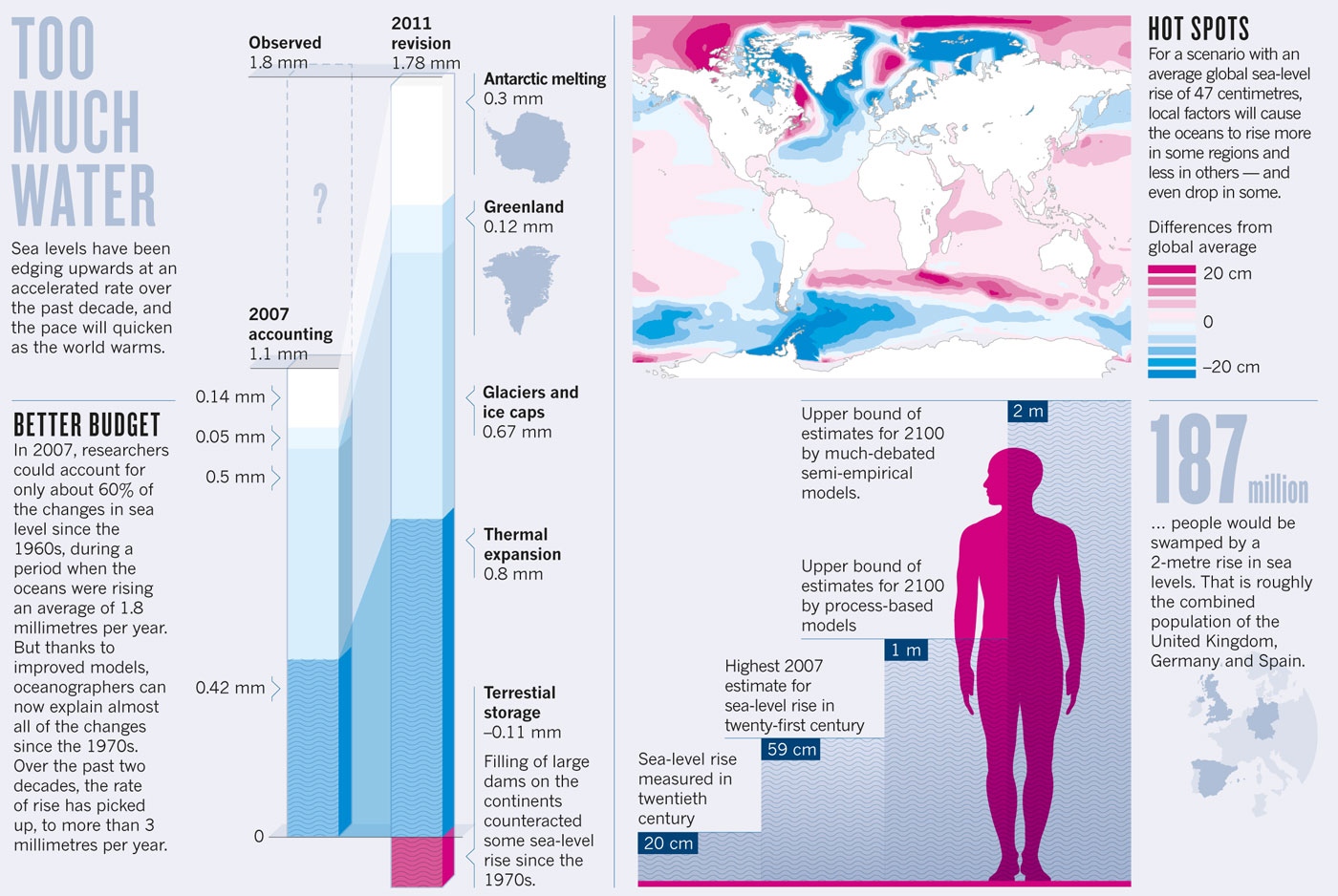From NewsDeeply by Erica Cirino
Scientists are using satellites to identify where increasing sea levels could result in the most destructive storm surge as hurricanes grow more powerful due to climate change.
Scientists are "fingerprinting" sea level rise around the world in an effort to identify coastal areas most at risk from devastating storm surge, as hurricanes grow increasingly destructive.
Warming ocean temperatures due to climate change can fuel more powerful storms.
Hurricane-force winds push water onto land, putting lives and property at risk while rising sea levels in coastal areas have magnified the impact of such storm surge.
Now a new study published in the journal Geophysical Research Letters verifies the accuracy of a satellite-based monitoring tool called “sea level fingerprinting.”
The technology detects varying patterns in regional sea levels, which can be used for predicting how climate change will affect future storm surge in flood-prone coastal areas.
“Sea level fingerprints tell us about how sea level rises regionally around the globe due to melting ice sheets and changes in water storage,” said the study’s lead author, Isabella Velicogna, a professor of Earth system science at the University of California, Irvine, and a scientist at NASA’s Jet Propulsion Laboratory in Pasadena, California.
“Sea level fingerprints will provide information on where sea level rises faster and therefore the coastline is more vulnerable to storm surge.”
For 15 years, the GRACE mission has unlocked mysteries of how water moves around our planet.
It gave us the first view of underground aquifers from space, and shows how fast polar ice sheets and mountain glaciers are melting.
Velicogna and her coauthor Chia-Wei Hsu, a postdoctoral scholar at U.C.Irvine, compared 12 years of sea level fingerprint data with data taken by seafloor pressure sensors that measure the overlying mass of water and ice.
While the physical measurements are considered most accurate, Velicogna and Hsu found the satellite-derived measurements were very similar.
The scientists concluded that the satellite data provides a fairly accurate picture of sea level fingerprints that could create a roadmap for better placement of seafloor pressure sensors.
These sensors may be used to improve sea level fingerprint calculations in the future – and help people in vulnerable coastal zones better understand the extent of storm surge when a hurricane strikes.
Velicogna said that based on sea level fingerprint data, it’s already become clear which geographic regions are most vulnerable to floods.
“The greatest rise is not near the ice sheets – where sea level will actually fall – but far from the ice sheets,” said Velicogna.
“So, the largest increase in sea level is going to be at low latitudes” where the water mass of melted ice is redistributed over large areas.
Global sea levels have increased by an average of 3in (8cm) globally since 1992, with some areas experiencing a rise greater than 9in (23cm), according to NASA.
If climate change continues at its current pace, increased warming may melt enough of Earth’s ice caps, ice sheets and glaciers to raise average sea levels as much as 6.6ft (2m) by 2100
Artist’s conception of the GRACE spacecraft orbiting Earth.
NASA/JPL
The two GRACE satellites have been collecting data about Earth’s gravity field for the past 15 years, allowing scientists for the first time to calculate the depletion of freshwater supplies in aquifers around the world and the rate at which glaciers are melting.
But one of the satellites has nearly exhausted its nitrogen fuel supply and its battery is failing.
While NASA and its partner, the German Aerospace Center, have stabilized the failing satellite, they announced last week that both GRACE satellites would be decommissioned after a final mission ends in November.
Now the space agencies are rushing to put a new pair of satellites, GRACE-Follow-On, into orbit by early 2018 to avoid an interruption in the collection of crucial data.
In the meantime, scientists will continue monitoring the seas in an attempt to predict floods before they happen, especially before major storms.
“Sea level fingerprints will provide information on where sea level rises faster and therefore the coastline is more vulnerable to storm surge,” said Velicogna.
Links :
- Nature : Global fingerprints of sea-level rise revealed by satellites
- NYTimes : What Could We Lose if a NASA Climate Mission Goes Dark?
- ScienceMag : Satellites measuring Earth’s melting ice sheets to go dark
- GeoGarage blog : New NASA model maps sea level rise like never before / Satellites trace sea level change / Global warming is melting the Greenland ice sheet, fast

No comments:
Post a Comment